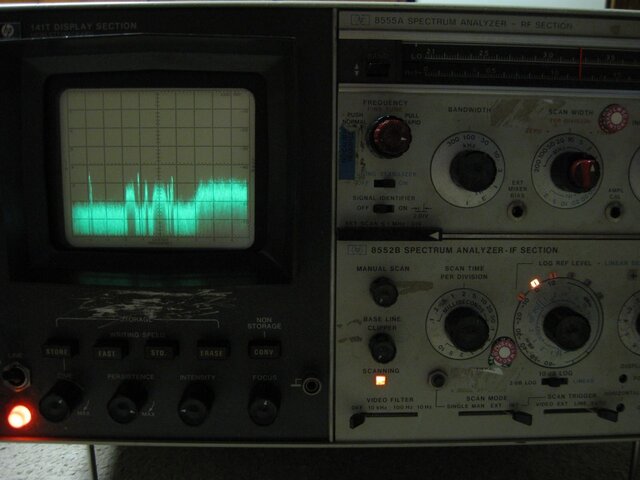Here is some more info Jerry
this is a power point file on NOAAPORT
http://www.weather.gov/datamgmt/slide_show/BrianGockel062509.ppt
I never used the polar weather satellites, I was looking for something that stayed in the same place.
That is when I decided to go with the GOES satellites, or geostationary satellites.
APT is about as old as WEFAX and no longer used on GOES, has been replaced by LRIT
Low Resolution Image Transmission
This is a digital format, and higher res. than wefax.
Then you have EMWIN
Emergency Managers Weather Information Network
19.2 Bps QPSK FEC
I have 3,000 + files from this service, It has an assortment of products from all the text bulletins to graphic products and is quite fast Esp. with the last upgrade.
It is a much smaller version of NOAAPORT. and more costly.
Looking around min $1000.00 now on the Comm. market.
GVAR
GoesVARiable
This is the processed imager and sounder info on GOES, comes at 2.11 Mbs BPSK
1685.7 and is 4 Mhz wide signal.
These are NOT imgs, they are calibrated points and temperatures that are plotted to make an image.
Known as Gridded data, from what I have been told this is an old format.
When displaying this data you can see GPS coordinates and on the IR images temperature of that pixel.
As I said this is not an easy to decode data, That is why I perfer NOAAPORT.
The system I use here is made comm. made by Automated Sciences LLC.
I know of no one that has made a homebrew GVAR station.
and is way out of the price range of the hobbyist.
looking at a nominal $7000.00, they use to be $20,000
NOAAPORT
DVB-S soon DVB-S2
This is weather data relayed through a comm. satellite.
This is the gateway into NOAA and almost all of it's products, which is a H*LL of lot of them.
That's why there is so much data coming off NOAAPORT, it covers all the regional NWS offices + National and some overseas.
But the way that they (NWS) makes this data available is quite cheap compared to other systems out there and the products available.
The formats they use can be decoded fairly easily, exp. satellite imgs.
also the gear to receive this is readily there.
Unlike the the L band, it getting harder to come by and more costly.
Sorry guys it's true
I have invested around $300 into my NOAAPORT, At that small of a price to get a massive amount weather data from satellites, I about wet my pants!
Also a big plus, Unlike GOES you get one or the other depending on what bird your on NOAAPORT you get bolth and more.
The NOAAPORT satellite imgs. are timely, No delay or very small, there transmitted as soon as the GVAR image is done.
I use this data here to watch the weather. It's one of my loves.
Also to help the local hams when spotting.
The simple thing to understand about BPSK,QPSK, and so fourth is amount of data that can be transmitted. The more phase changes that occur the more data that can be transmitted.
But there is a trade off, the higher the phase changes the probability that you can get errors.
I'm No tech. but I believe that I need to be able to take care of my setups and manage them so I need to understand them a little.
I'm glad that you and Patrick are working together to make software, that is the only way the market is going to be there for this.
Otherwise cost will be a factor.
And I say Thank You
Good luck on HRPT, here is a link to RIG
Remote Imaging Group
http://www.rig.org.uk/
there is tons of info on there.
I have a couple of their old mags. and they are really good.
Don't be a stranger here
come by again.
Tim













